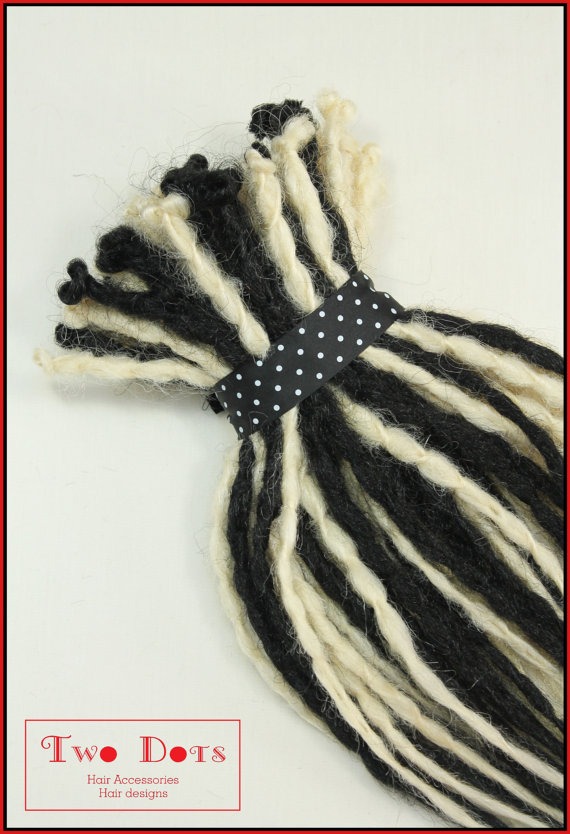
Like KK dreads, wool can also be crocheted and wrapped. Hand felting will produce straight smooth dreads, washing machine felting will give you wiggly dreads. However this does depend on the technique used to create them. Usually, roving dreads start off their life as smooth straight dreads. Roving dreads really does have the crown when it comes to colour melts and blends. As sheep are often white, the wool used for dreads can be dyed every and all colours you can think of. This can make it more comfortable to sleep on. Wool dreads are much softer and squishier than KK dreads, as they’re made using a natural fiber.

Roving dreads are made but using un-spun wool, and felting it into dread shapes. There are other types of wool used, and some vegan options also available such as bamboo fiber. Roving dreads are typically made from merino sheep wool. For example, smooth dreads curl better than crochet dreads, and crochet dreads are more suited to being wavy.

However different types suit different finishes better. Straight, Wavy, Curly –Īll the types of KK dreads can either be left straight, given a slight wave, or fully curled. The above image is provided by the amazing LS Seven. They have strands of KK wrapped around a back combed core. They have a more natural finish to them, and aren’t tightly twisted like smooth dreads. Wrapped KK dreads are similar to crochet dreads. In fact, when crochet dreads become more worn, they look even more like natural dreads and this just enhances the texture. As crochet dreads aren’t twisted, they are more durable than smooth dreads, as they can’t unravel. The dread will then be sealed to make all the knots tight and give the dread strength. They are made by using a crochet hook to pull and wrap bits of hair around the back combed KK. They have lumps and bumps and are the closest to the look of real dreads. Crochet KK dreads –Ĭrochet KK dreads are a lot more natural looking than smooth dreads. It’s important to note that over time they will loosen, although they should never unravel completely. As KK is heat malleable, meaning it will shrink and stay in the tight twist. This texture is done by twisting back combed KK, and then sealing with steam. They are sleeker than other textures, and are often quite tight/solid to touch. Smooth KK dreads are just that, dreads which are smooth and uniformed.
#HOW TO MAKE SINGLE ENDED SYNTHETIC DREADS INSTALL#
A full install of dreads can be made up of one or more of these, depending on the look you want to go for. KK dreads come in a few different textures. Although this isn’t very important to know if you’re buying dreads, this is important when buying KK to make dreads yourself. Mostly it’s bought in the colours needed and used to create the dreads. Although it’s possible, it’s unusual that you dye the KK yourself. Due to this, all the colours can be hand blended and lots of styles are avaliable. Kanekalon comes in pack of ‘hair’ and is made up of lots of individual strands. This is essentially a type of plastic, although the finished product doesn’t feel like plastic as you’d imagine it. This is a widely available fiber which comes in lots of colours and is manipulated using heat. Synth dreads are made using a fiber called Kanekalon (KK). I’ve tried making roving but after two washing machine emergencies I decided KK was best for me! I do talk about both types in this post, but please bare in mind I’m a KK artist, not a wool maker. Which do you prefer the look of? What colours and styles do you want to have? Personally, Tyto Dreads only makes Kanekalon dreads. Whether you pick synthetic dreads or wool dreads is totally down to personal preference.


There is also other types such as yarn and faux roving, but these aren’t as widely used. The main two types of synthetic dreads are Synthetic (kanekalon) dreads, and Roving/wool dreads. One of the most important decisions to make when buying or making dreads is what materials you’re going to use, and what texture you’re wanting to achieve.


 0 kommentar(er)
0 kommentar(er)
